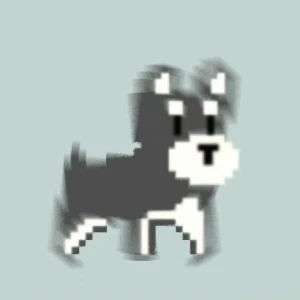 康康map
康康map -
狼
l俷g
〈名〉
(形声。从犬,良声。本义:狼)
同本义 [wolf]
狼,似犬,锐头,白颊,高前广后。――《说文》
并驱从两狼兮。――《诗·齐风·还》
犬属的任何一种大型犬形哺乳动物,狡猾、贪婪,对牛、羊和猎兽造成极大损害,有时袭击人类,尤其在成群的时候。如:狼卜(相传狼必先卜方向,然后觅食);狼卜食(传说狼觅食,先卜方向);狼子(狼崽子。比喻凶暴狠毒的人);狼毫(狼毛。或指用鼬鼠皮制成的毛笔);狼犬(狼和犬。亦称“狼狗”。一种外形如狼的狗。性凶猛,嗅觉灵敏);狼牙(狼的牙齿);狼虎(狼与虎;比喻凶恶残暴的人)
即俍人 [Lang nationality]。明代中叶至清代主要分布于广西一带的壮族。如:狼师(指俍人组成的军队);狼兵(明时称广西的“东兰”、“那地”、“南丹”、“归顺”诸土司的兵)
星名。即天狼星 [Sirius]。如:狼弧(狼星和弧星);狼角(天狼星的芒角);狼星(星名)
姓
狼
l俷g
〈形〉
凶狠 [fierce and malicious]
狼,俍也。――《广雅》
秦国之俗贪狼。――《淮南子·要略》
狼戾不可止。――《淮南子·览冥》
又如:虎狼(比喻凶恶残暴的人);狼戾(比喻人的性格贪婪残暴,像狼一样凶狠);狼心(喻狠毒贪婪的心);狼心狗行(比喻心肠狠毒贪婪,行为卑鄙无耻);狼性(凶恶的心性)
急快 [hurry]。如:狼忙(急促,匆忙);狼抢(仓皇的样子);狼奔兔脱(形容仓皇逃窜);狼狈周章(仓皇惊恐)
散乱,困窘 [in random]。如:狼当(困窘和颓丧的样子);狼跋(喻艰难窘迫);狼戾(谓散乱堆积;纵横交错)
笨,拙 [stupid;bulky]。如:狼犺(亦作“榔槺”,形容物体长大笨重);狼伉(笨重;傲慢)
狼狈不堪
l俷gb坕-b攌乶
[be badly battered;get left;in a dilemma;like a drowned mouse;in sore straits] 狼狈:又作“狼贝”、“狼跋”。形容疲惫、窘迫的样子。《三国志·马超传》:“[梁宽],[赵衢]闭冀城门,超不得入,进退狼狈。”现多形容处境困难,窘迫的样子
那提调狼狈不堪…被钦差拍着桌子,狗血喷头的一顿大骂。――清·吴趼人《二十年目睹之怪现状》
狼狈为奸
l俷gb坕-w唅ji乶
[act in cahoots;collusion with each other;hand in glove,hand and glove; work hand in glove with; pack cards with sb.; one hand washes another] 传说狈是跟狼同类的野兽,前腿极短,行动时要爬在狼身上,没有狼就不能行动。狼和狈经常结合伤害牲畜,因此用来比喻为了达到恶毒的目的,互相勾结做坏事
诗翁画客狼狈为奸,怨女痴男鸳鸯拼命。――清·吴趼人《二十年目睹之怪现状》
他发现警察和搞诈骗的歹徒是狼狈为奸的
狼奔豕突
l俷gb昂-sh媡?
[run like a wolf and rush like a boar; rush about like wild beasts] 狼和猪到处奔跑。比喻很多坏人四处流窜
狗偷鼠窃盈州县,狼奔豕突干刑宪。――清·伤时子《苍鹰击·诉愁》
狼多肉少
l俷gdu?r耻sh僶
[there is too little meat for so many wolves] [东北方言]∶供不应求,近似“粥少僧多”
你没看见现在东西缺,狼多肉少。你弄不来,被别人弄去,大伙就把意见集中到你身上
狼狗
l俷gg弖
[wolfhound; German shepherd dog] 外形似狼的一种优良狗,凶猛而嗅觉灵敏,可充作军犬、警犬、猎犬等
狼顾
l俷gg?
[suspicious and neverous for fear of attack from behind;watchout] 像狼一样经常回头看,怕遭到袭击,形容人行事有所顾虑,怕自己受害
狼顾狐疑
狼孩
l俷gh俰
[wolf child] 据信由狼或其他野兽哺育长大的孩子
狼号鬼哭
l俷gh俹-gu媖?
[pathetic cries] 形容大声哭叫,声音凄惨
况且宝玉才好了些,连我们也不敢说话,你反打的人狼号鬼哭的!――《红楼梦》
亦作“鬼哭狼嚎”
狼毫
l俷gh俹
[writing brush made of weasel"s hair] 用黄鼠狼的尾毛做成的毛笔
小楷狼毫
狼藉
l俷gj?
[be in disorder;scattered about in a mess] 乱七八糟;散乱、零散
闻其儿为吏,放纵狼藉。――《后汉书·张酺传》
满目狼藉
杯盘狼藉
也作“狼籍”
狼井
l俷gj媙g
[trou-do-loup] 倒圆锥形或倒角锥形(倒金字塔形)的陷井,中间有一尖桩,是阻碍敌人行动而筑成的障碍物
狼吞虎咽
l俷gt忧-h搚刵
[gorge;be a devil to eat;devour ravenously; gobble up; make a pig of oneself wolf down one"s food] 形容吃东西不细嚼,又急又猛
他扑到鸡蛋和咸肉上,狼吞虎咽地大吃起来
狼烟
l俷gy乶
[smoke of wolves" dung;fire beacon along the border to signal alarm] 烽火。相传中国古代边防报警时烧狼粪起的烟
三道狼烟过碛来,受降城上探旗开。――薛逢《狼烟》
狼烟四起
l俷gy乶-s宷?
[be enveloped in the flames of war;with alarms raised at all border posts] 狼烟:焚烧狼粪升起的烟雾。四处有报警的烟火,指边疆不平静、战事不断
这火筒节节生枝,能吹得狼烟四起,实是放他不得。――清·钱彩《说岳全传》
狼崽
l俷gz僫
[wolfling] 小狼或幼狼
狼子野心
l俷gz?y噚塶
[rapacity;aggressive designs of the wolves; wild ambition; wolfish nature] 狼崽子具有凶恶的野性。比喻凶恶的本性难以改变。也比喻坏人用心狠毒
谚曰:狼子野心。是乃狼也,其可畜乎!――《左传·宣公四年》
狼
l俷g ㄌㄤˊ
哺乳动物,形状很像狗,性残忍而贪婪,昼伏夜出,能伤害人畜。毛皮可制衣褥:~狈。~奔豕突。~吞虎咽。~子野心(喻凶恶残暴的人的狂妄欲望和狠毒用心)。引~入室(喻引进坏人)。
郑码:QMSX,U:72FC,GBK:C0C7
笔画数:10,部首:犭,笔顺编号:3534511534
 Chen
Chen -
1. What are the species of wolves? (top)
There are three species of wolves in the world: the gray wolf (Canis lupus), the red wolf (Canis rufus) and the Ethiopian (or Abyssinian) wolf, (Canis simensis). Some researchers believe the Ethiopian wolf is not a wolf, but actually a jackal.
2. What are the subspecies of the gray wolf? (top)
The gray wolf, Canis lupus, lives in the northern latitudes around the world. There are five subspecies of the gray wolf in North America and seven to 12 in Eurasia. The currently recognized subspecies in North America are:
Canis lupus baileyi, commonly referred to as the Mexican wolf or lobo.
Canis lupus nubilus, referred to as the Great Plains or buffalo wolf.
Canis lupus occidentalis, known as the Rocky Mountain wolf or Mackenzie Valley wolf.
Canis lupus lycaon, commonly referred to as the eastern timber wolf.
Canis lupus arctos, known as the arctic wolf.
Subspecies are often difficult to distinguish from one another. This is because they interbreed where their ranges overlap so that their populations tend to blend together rather than form distinctive boundaries. The different traits we see in subspecies are likely the result of geographic range, available habitat, and prey base. Skull dimensions, overall size, fur color, and the length of appendages are some of the characteristics that differ between subspecies of gray wolf.
3. What is a pack of wolves? (top)
Wolves usually live in packs which consist of the adult parents, referred to as the alpha pair, and their offspring of perhaps the last 2 or 3 years. The adult parents are usually unrelated and other unrelated wolves may sometimes join the pack.
4. How many wolves are in a pack? (top)
Pack size is highly variable because of birth of pups, dispersal, and mortality. Generally, a gray wolf pack has from six to eight wolves, but in Alaska and northwestern Canada some packs have over 30 members.
Red wolf packs are generally smaller than gray wolf packs and usually have 2 to 8 members, but a pack of 12 is known in the wild.
5. What is a pack territory size? (top)
Territory size is highly variable. Gray wolf territories in Minnesota range from about 25 to 150 square miles, while territories in Alaska and Canada can range from about 300 to 1,000 square miles.
Red wolf territories can be from 10 to 100 square miles, but the territories of red wolves reintroduced into North Carolina have been 38 to 87 square miles.
6. When do wolves breed? (top)
Wolves breed at slightly different times, depending on where they live. For example, gray wolves in the Great Lakes Region breed in February to March, while gray wolves in the Arctic may breed slightly later in March to April.
Red wolves usually breed in January or February.
7. What is the gestation period of a wolf? (top)
The gestation period of gray and red wolves is usually around 63 days.
8. How many pups are born in a pack each year? (top)
A pack normally has only one litter of pups each spring, but in areas of high prey abundance more than one female will give birth in each pack. An average litter size for gray and red wolves is 4 to 6, but several may die if natural prey is not readily available.
9. How much do wolf pups weigh? (top)
Gray wolf pups weigh 1 pound at birth, while red wolf pups weigh less than a pound at birth.
10. How much do adult wolves weigh? (top)
Adult female gray wolves in northern Minnesota weigh between 50 and 85 pounds, and adult males between 70 and 110 pounds. Gray wolves are larger in the northwestern United States, Canada, and Alaska where adult males weigh 85 to 115 pounds and occasionally reach 130 pounds.
Adult female red wolves weigh 40 to 75 pounds, while males weigh from 50 to 85 pounds.
11. How big are wolves? (top)
The average length (tip of nose to tip of tail) of an adult female gray wolf is 4.5 to 6 feet; adult males average 5 to 6.5 feet. The average height (at the shoulder) of a gray wolf is 26 to 32 inches.
The average length (tip of nose to tip of tail) of an adult red wolf is 4.5 to 5.5 feet. The average height (at the shoulder) of an adult red wolf is about 26 inches.
12. How big is a gray wolf"s track? (top)
The size of a wolf"s track is dependent on the age and size of the wolf, as well as the substrate the track was made in. A good size estimate for a gray wolf"s track size is 4 1/2 inches long by 3 1/2 inches wide. In comparison, a coyote"s track will be closer to 2 1/2 inches long by 1 1/2 inches wide. Only a few breeds of dogs leave tracks longer than 4 inches (Great Danes, St. Bernards, and some bloodhounds).
13. How many teeth does an adult wolf have? (top)
Adult gray and red wolves have 42 teeth, while adult humans have 32.
14. How strong are a gray wolves" jaws? (top)
The massive molars and powerful jaws of a wolf are used to crush the bones of its prey. The biting capacity of a wolf is 1,500 pounds of pressure per square inch. The strength of a wolf"s jaws makes it possible to bite through a moose femur in six to eight bites. In comparison, a German shepherd has a biting pressure of 750 pounds per square inch. A human has a much lower biting pressure of 300 pounds per square inch.
15. What do wolves eat? (top)
Gray wolves prey primarily on large, hoofed mammals such as white-tailed deer, mule deer, moose, elk, caribou, bison, Dall sheep, musk oxen, and mountain goat. Medium sized mammals, such as beaver and snowshoe hare, can be an important secondary food source. Occasional wolves will prey on birds or small mammals.
Red wolves primarily prey on white-tailed deer, raccoons, rabbits and rodents.
16. How much do wolves eat? (top)
Gray wolves can survive on about 2 1/2 pounds of food per wolf per day, but they require about 5 pounds per wolf per day to reproduce successfully. The most a gray wolf can eat in one sitting is about 22.5 pounds.
Red wolves eat an average of 5 pounds of food per day, but have been known to eat up to 12 pounds in one sitting.
17. How many prey do gray wolves kill per year? (top)
In Minnesota, wolves kill the average equivalent of 15 to 20 adult-sized deer per wolf per year. Given the 1997-98 estimate of 2,450 wolves in Minnesota, that would equal about 36,750 to 49,000 deer killed by wolves. In comparison, from 1995-1999 hunters killed between 32,300 to 78,200 deer each year in Minnesota"s wolf range. In addition, several thousand deer are killed during collisions with vehicles each year.
18. How long do wolves live? (top)
Gray wolves in the wild have an average life span of 6 to 8 years, but have been known to live up to 13 years in the wild and 16 years in captivity. Red wolves in the wild have an average life span of 8 to 9 years, but have been known to live up to 12 years in the wild and 16 years in captivity.
19. What do gray wolves die from? (top)
The natural causes of wolf mortality are primarily starvation, which kills mostly pups, and death from other wolves because of territory fights. While not usually a big problem, disease such as mange and canine parvovirus can be a concern in small and recovering populations. Injuries caused by prey results in some deaths. Human-caused mortality including legal, illegal, and accidental causes, can be high in some populations. Pup mortality rates are highly variable, but approximately 40 to 60% of wolf pups die each year.
20. How fast can gray wolves run? (top)
Wolves will travel for long distances by trotting at about five miles per hour. They can run at speeds of 25 to 35 miles per hour for short bursts while chasing prey.
21. How far can gray wolves travel? (top)
Wolves may travel 10 to 30 miles each day in search of food. Dispersing wolves, those leaving packs in search of their own mate, have been known to travel distances of 550 miles away form their home territory.
 大牛哥
大牛哥 -
蒙古草原狼是这样神奇的动物,它们独自打猎或是集体围攻,便是草原人习武作战的生动课堂。在蒙古人眼里,狼是腾格里(上天)派来保护草原的使者。无怪蒙古牧民对狼是如此的敬畏,人死了尸首还要喂狼,认为只有这样灵魂才能升上腾格里
最欣赏的是狼的耐性。狼可以盯上了猎物一直尾随,一路上忍冻挨饿,直到猎物露出破绽才果断地出击。围攻时群狼可以屏息凝神,听从头狼指挥,布下罗网,静待时机。看似与好战逆向而行的耐性,却正是实战经验的智慧所在。
蒙古人有一半的时间是在学着狼打猎的,蒙古老人说,不打猎蒙古人的脑子就变笨了我觉得狼的形象是一种很男人的阳刚个性。好的男人应该首先是个猎人。他身经百战,也许还曾遍体鳞伤。身上每一个伤痕都曾经是鲜血混着泥泞,他却一路杀过来,眼里渐渐只剩下智慧之光。伤疤是男人的勋章。而如果这些伤疤全是为了一个女人,那她就是世上最幸福的女人。
Wolf Totem and China"s Cultural Trade Deficit
Howard W. French wrote about the Chinese novel 狼图腾, or “Wolf Totem” or “Wolf Spirit” alternately, in the New York Times: A Novel, by Someone, Takes China by Storm. The novel is about a Han Chinese youth and his experiences in nomadic Inner Mongolia. Apparently at some point he and his friends catch a wolf and keep it in a pit (which will be spun off into the film version which Peter Jackson, he of Lord of the Rings and King Kong, has bought the rights to), and he later witnesses the encroachment of Han society on the nomads. French interviews the author, a political scientist from Beijing who writes under the pseudonym Jiang Rong. His answers have interesting connotations for China"s relationship with Central Asia, it"s minorities and it"s own government:
“The answer lies in something shared between East and West, and that is the nomadic culture,” Mr. Jiang said, chain smoking in his austere living room, his face lighted sharply by the crisp rays of autumn light that filtered in from his garden. “The nomadism that people always talk about is full of killing and violence, but what it is really about is freedom. This wolf totem culture began earlier in Mongolia and is more sophisticated than anywhere else.”
According to Mr. Jiang, Chinese civilization is the product of two strains, nomadic and agricultural, and each has its symbols, the wolf and the dragon. For the author, the wolf is akin to the soul of the Mongolian grasslands, a worthy rival to man as well as a symbol of heaven itself. “You can look at the wolf and dragon as opposites,” he said. “The dragon represents autocratic emperors. The wolf means freedom, the mother of democracy, and China opposes freedom more than anything else.”
He said the gradual demise of China"s wolf heritage helps explain how the country was surpassed by the West. “As long as most people are lambs, the dragon has no problem,” he said in what seemed like a thinly veiled comment about China"s politics. “But the more wolves there are, the more interesting things become.”
 我不懂运营
我不懂运营 -
蒙古草原狼是这样神奇的动物,它们独自打猎或是集体围攻,便是草原人习武作战的生动课堂。在蒙古人眼里,狼是腾格里(上天)派来保护草原的使者。无怪蒙古牧民对狼是如此的敬畏,人死了尸首还要喂狼,认为只有这样灵魂才能升上腾格里
最欣赏的是狼的耐性。狼可以盯上了猎物一直尾随,一路上忍冻挨饿,直到猎物露出破绽才果断地出击。围攻时群狼可以屏息凝神,听从头狼指挥,布下罗网,静待时机。看似与好战逆向而行的耐性,却正是实战经验的智慧所在。
蒙古人有一半的时间是在学着狼打猎的,蒙古老人说,不打猎蒙古人的脑子就变笨了我觉得狼的形象是一种很男人的阳刚个性。好的男人应该首先是个猎人。他身经百战,也许还曾遍体鳞伤。身上每一个伤痕都曾经是鲜血混着泥泞,他却一路杀过来,眼里渐渐只剩下智慧之光。伤疤是男人的勋章。而如果这些伤疤全是为了一个女人,那她就是世上最幸福的女人。
 tt白
tt白 -
Wolf Basics
Wolf Pup Development
Neonatal Period - from birth to the age of eye opening 12 - 14 days
Birth - Born approximately one pound, blind, deaf, darkly furred, small ears, rounded heads, "pugged" nose, little if any sense of smell; they are unable to control own body temperature, motor capacities limited to a slow crawl, mainly with front legs and to sucking and licking; possess a good sense of balance, of taste, and of touch, can whine and yelp; nursing pups feed four or five times a day for periods of three to five minutes and on average females will gain 2.6 lbs. and males 3.3 lbs. per week for the next fourteen weeks. This time is known as the "period of maximal growth."
Transition Period - from eye opening until about 20 - 24 days
2 weeks - Eyes open and are blue at 11-15 days, but vision is poor and they are not able to perceive forms until weeks later; milk incisors present (15 days) and can start eating small pieces of meat regurgitated by adults; begin to stand, walk, growl, and chew; first high-pitched attempts at howling.
Socialization Period - from 20 - 24 days until about 77 days
3 weeks - Begin appearing outside the den and romping and playing near the entrance; hearing begins (~27 days, ears begin to raise; ~31 days, ears erect but with tips still flopping); canines and premolar teeth present.
4 weeks - Weigh 5-6 lbs.; growth of adult hair around nose and eyes; bodies begin to take on conformation of adults with disproportionately large feet and head; high-pitched howls are gaining strength; mother may go off for hours on end to hunt; dominance and play fighting begin.
5 weeks - Gradual process of weaning begins. Can follow adults up to one mile from den.
8 weeks -Disproportionately large feet and head.
8-10 weeks - Adults abandon den and move pups to rendezvous site; weaning complete, pups can feed on food provided by adults; adult hair becomes apparent on body.
8-16 weeks - Eyes gradually change from blue to yellow-gold.
Juvenile Period - from 12 weeks to sexual maturity
12 weeks - Begin to accompany adults on hunting trips for a short while and return to rendezvous site by themselves.
3.5 months - The "period of rapid growth (14-27 weeks)" begins: the pups will gain approximately 1.3 lbs. per week for the next three months.
4-6 months - Milk teeth replaced; winter pelage becomes apparent.
6 months - Pups begin to accompany adults on hunts; pup appearance nearly indistinguishable from adults.
7 months - The "period of slow growth (27-51 weeks)" begins: the female pups will gain approximately .07 lbs. per week and the male pups will gain approximately .4 lbs. per week; pups begin to travel with pack.
7-8 months - Actively begin hunting.
1 year - Epiphyseal cartilage closes off, marking the end of skeletal growth.
22 months - Sexual maturity.
 豆豆staR
豆豆staR -
"There are dozens of dramatic stories about survival, loyalty and sacrifice of wolves."
"local Mongolian herdsmen see the wolves as the chosen sons of Tengger, or the sky - the supreme power in the cosmos."
"they are considered the embodiment of all the features that any creatures, including man, should possess in order to earn a dignified survival in the harsh environment."
"Superior in wit, grit and patience, they are aggressive, relentless, and intractable. On the other hand, they always play by the rules of the game, killing only when hungry, as the maintenance of a wholesome steppe society mandates, and preparing at any time to sacrifice for its team."
"They are die-hard soldiers, always fighting to the last drop of blood. "
http://www.chinadaily.com.cn/english/doc/2004-12/14/content_399957.htm
Cultural Significance
Undeniably, wolves were and are an important part of Mongolian society and will continue to be so for as long as there is a Mongolian nation. From the time of Genghis Khan to modern day Mongolia, wolves have been unmatched in respect and deference paid to them. As was seen in The Secret History, wolves were respected for their power, stealth, and tenacity. Today in Mongolia, wolves are still very respected. It is believed that no one can see a wolf unless he or she is that wolf"s equal, and you cannot kill a wolf unless it chooses to submit to you. A large part of why Mongolians respect wolves so much stems from their way of life. Historically, Mongolia has been a nation of herders and hunters, and in both, wolves are very influential. As herders, Mongolians had to respect a wolf"s ability to kill their animals and disrupt their lives. As hunters, Mongolians respect wolves because of their ability to be such powerful and successful hunters. Whether it was 800 years ago or eight days ago, wolves enjoy enormous amounts of respect.
http://www.macalester.edu/anthropology/mongolia/wolf.html
 苏萦
苏萦 -
Mongol
n.蒙古人
adj.蒙古人的
蒙古人的信仰:Mongols" belief
 侠客
侠客 -
狼用英语讲是:wolf.
谢谢!
 真可云
真可云 -
Throw sb to the wolves.
A wolf in sheep一撇s clothing.
 牛云
牛云 -
我不懂太多的英语 可是我也很喜欢狼
 cl
cl -
wolf too
 一颗苹果
一颗苹果 -
miss
 王木生
王木生 -
Wolf Totem and China"s Cultural Trade Deficit
Howard W. French wrote about the Chinese novel 狼图腾, or “Wolf Totem” or “Wolf Spirit” alternately, in the New York Times: A Novel, by Someone, Takes China by Storm. The novel is about a Han Chinese youth and his experiences in nomadic Inner Mongolia. Apparently at some point he and his friends catch a wolf and keep it in a pit (which will be spun off into the film version which Peter Jackson, he of Lord of the Rings and King Kong, has bought the rights to), and he later witnesses the encroachment of Han society on the nomads. French interviews the author, a political scientist from Beijing who writes under the pseudonym Jiang Rong. His answers have interesting connotations for China"s relationship with Central Asia, it"s minorities and it"s own government:
“The answer lies in something shared between East and West, and that is the nomadic culture,” Mr. Jiang said, chain smoking in his austere living room, his face lighted sharply by the crisp rays of autumn light that filtered in from his garden. “The nomadism that people always talk about is full of killing and violence, but what it is really about is freedom. This wolf totem culture began earlier in Mongolia and is more sophisticated than anywhere else.”
According to Mr. Jiang, Chinese civilization is the product of two strains, nomadic and agricultural, and each has its symbols, the wolf and the dragon. For the author, the wolf is akin to the soul of the Mongolian grasslands, a worthy rival to man as well as a symbol of heaven itself. “You can look at the wolf and dragon as opposites,” he said. “The dragon represents autocratic emperors. The wolf means freedom, the mother of democracy, and China opposes freedom more than anything else.”
He said the gradual demise of China"s wolf heritage helps explain how the country was surpassed by the West. “As long as most people are lambs, the dragon has no problem,” he said in what seemed like a thinly veiled comment about China"s politics. “But the more wolves there are, the more interesting things become.”
